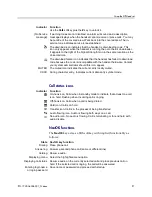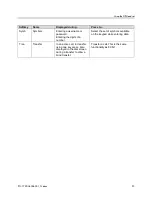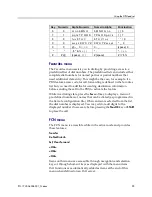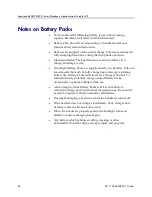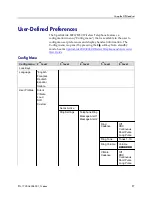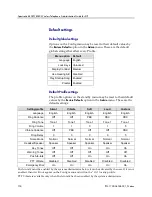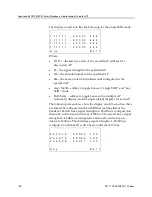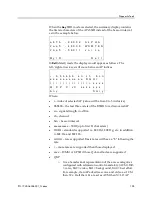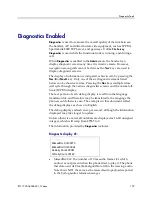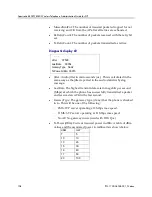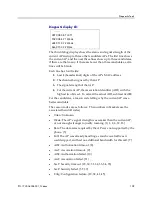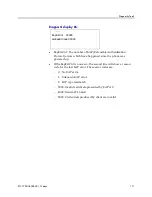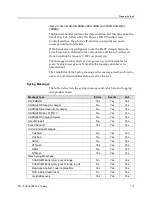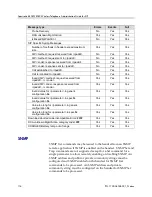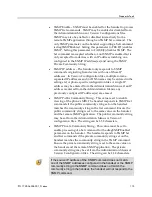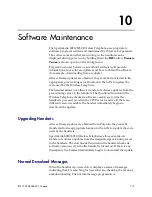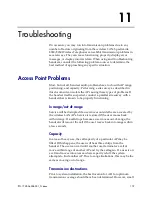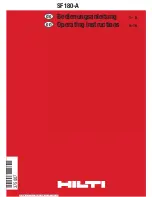
Diagnostic Tools
PN: 1725-36038-001_N.docx
105
When the
Any
SSID mode is selected, the summary display contains
the first six characters of the APs SSID instead of the beacon interval
as in the example below.
a b 7 b - 2 8 0 0 2 A L P H A
2 a e 5 - 4 8 0 0 6 W S M T E S
2 a e 5 - 5 6 0 1 1 v o i c e
M y I D
D e t l
In
Detl
(detail) mode the display would appear as follows. The
left/right arrow keys will move between AP indices.
i : b b b b b b
s n c h
b c n
e e e e e e e e e e e D G H I
r r r r r r r r r r r r r + x x x x
Q : X P C : v C s s s s s s s
A n y
S m r y
Where:
•
i – index of selected AP (value will be from 0 to 3 inclusive)
•
bbbbbb – the last three octets of the BSSID for a discovered AP
•
sn – signal strength in –dBm
•
ch – channel
•
bcn – beacon interval
•
eeeeeeeeeee – SSID (up to first 11 characters)
•
DGHI – standards supported i.e. 802.11d, 802.11g, etc. in addition
to 802.11a and 802.11b.
•
rrrrrrrr – rates supported. Basic rates will have a “b” following the
rate
•
+ – more rates are supported than those displayed
•
xxxx – WMM or UPSD if those QoS methods are supported
•
Q:XP
o
X is a hexadecimal representation of the access categories
configured with admission control mandatory (ACM). Bit3
= voice, Bit2 = video, Bit1 = background, Bit0 = best effort.
For example, if an AP advertises voice and video as ACM
then X=c. If all the ACs are set as ACM then X=f. If AP

